High-Yield Strategies for Addition and Subtraction in First Grade
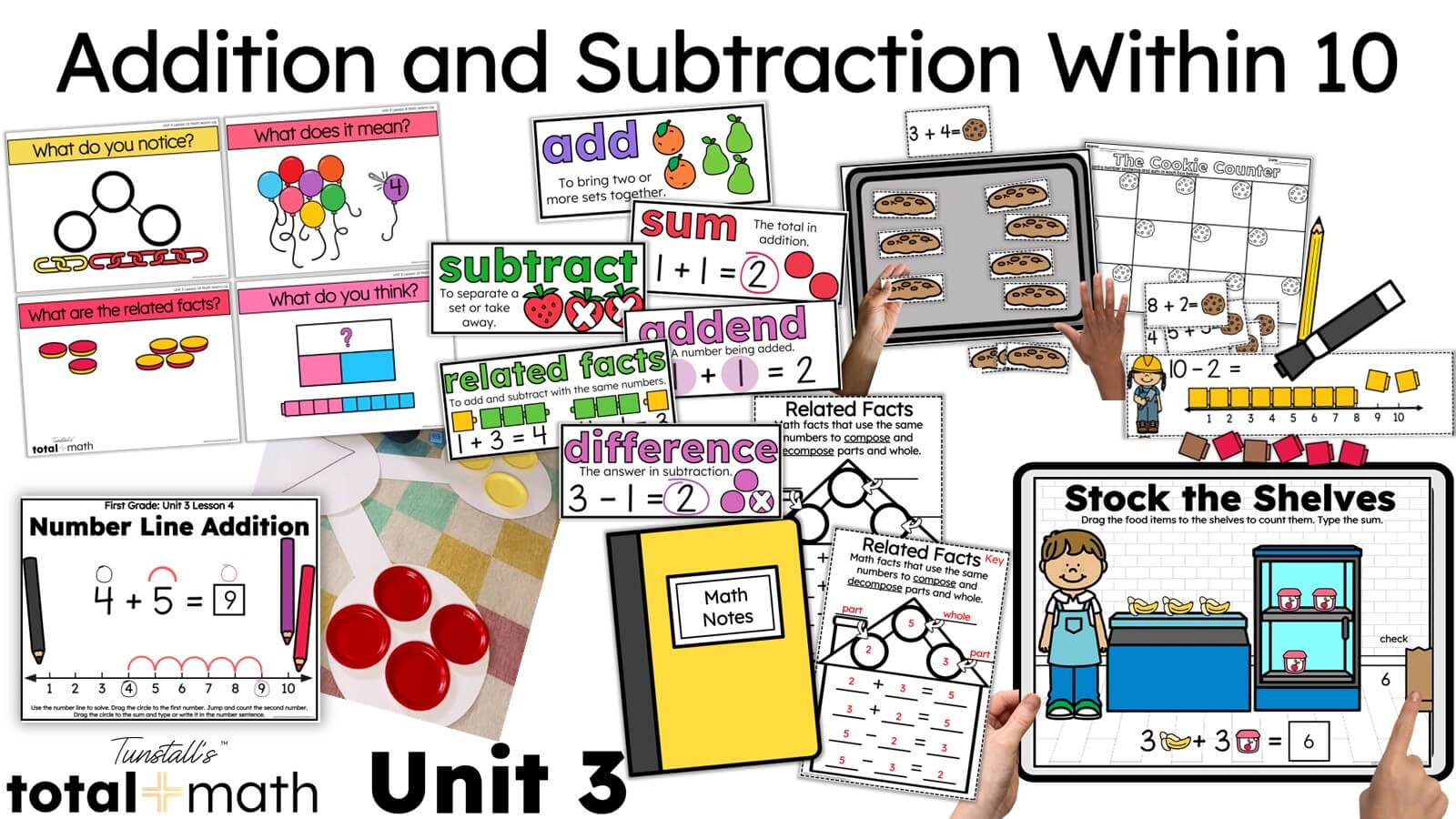
Helping first graders master addition and subtraction is crucial for building a strong foundation in math. This post focuses on high-yield strategies for addition and subtraction in first grade.
If you think your students may benefit more from teaching the counting on strategy, visit my dedicated post, Counting On to Add in Kindergarten and First Grade, and then come back to this when ready!
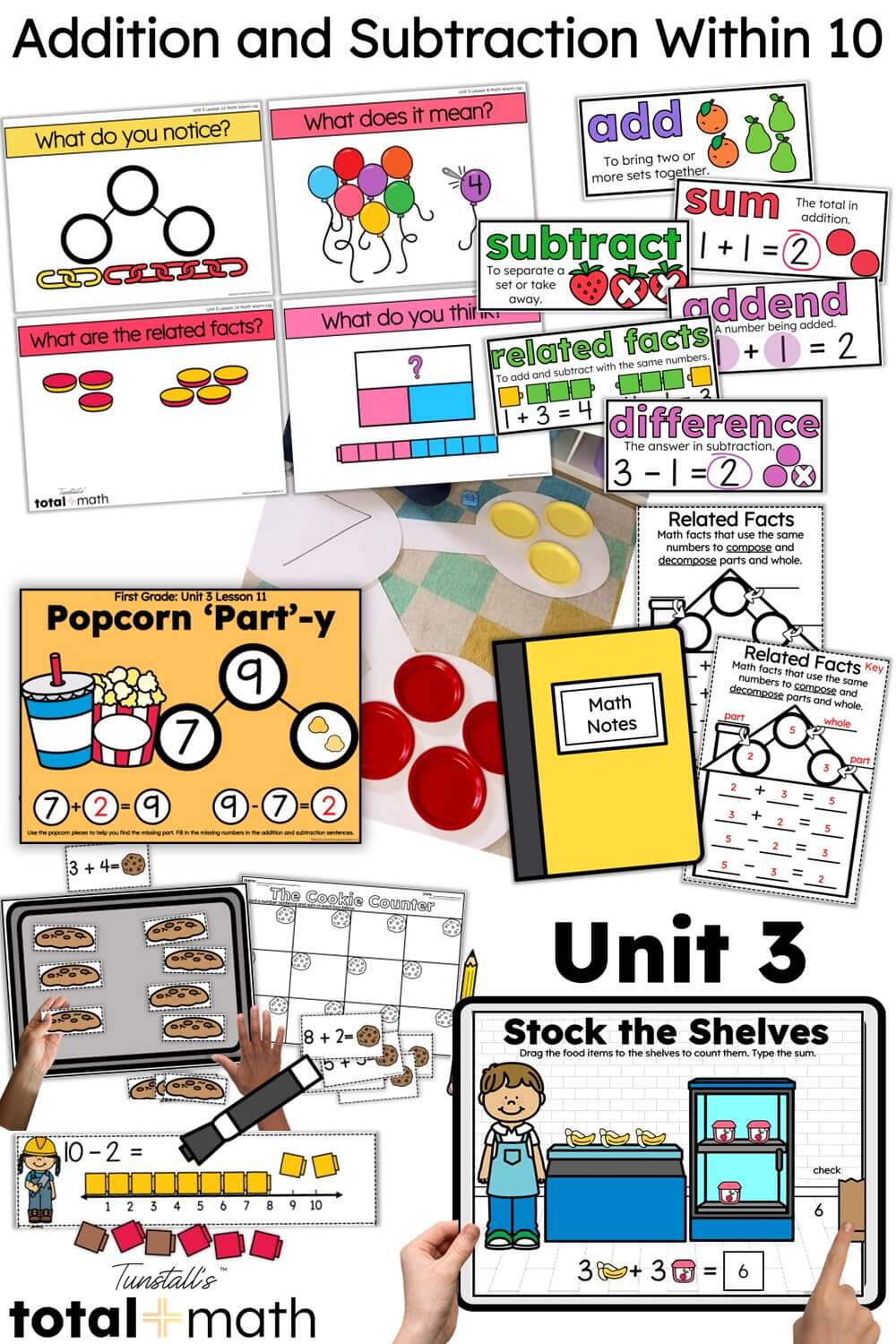
High-Yield Strategy 1: Interactive Mini-Lessons for Teaching Practices
Mini-lessons that involve students in the learning allow first graders to actively engage in their learning as mathematicians. This buy-in creates a deeper connection to the content. Students show much higher autonomy later in independent math tasks when they actively participate in the initial teaching.
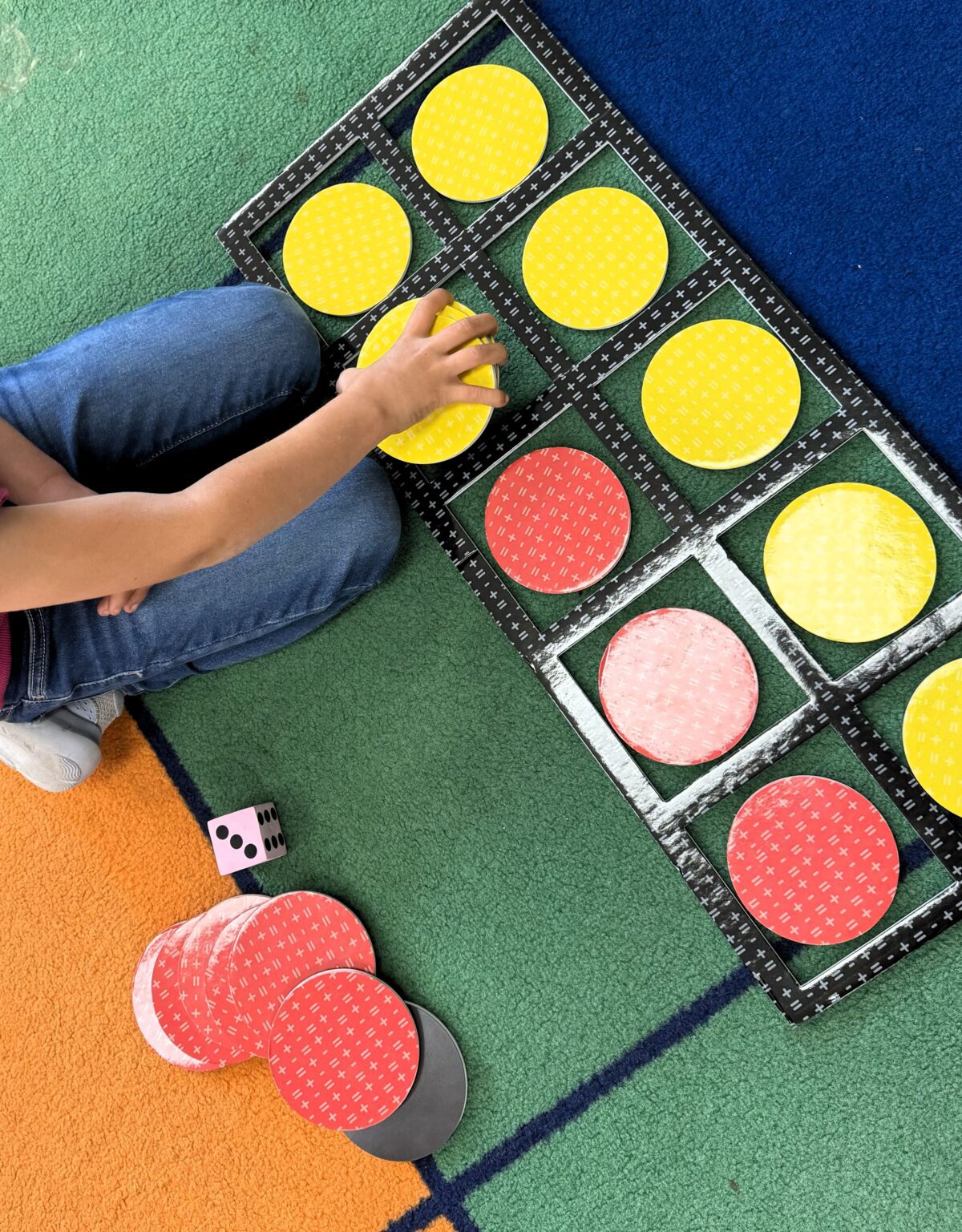
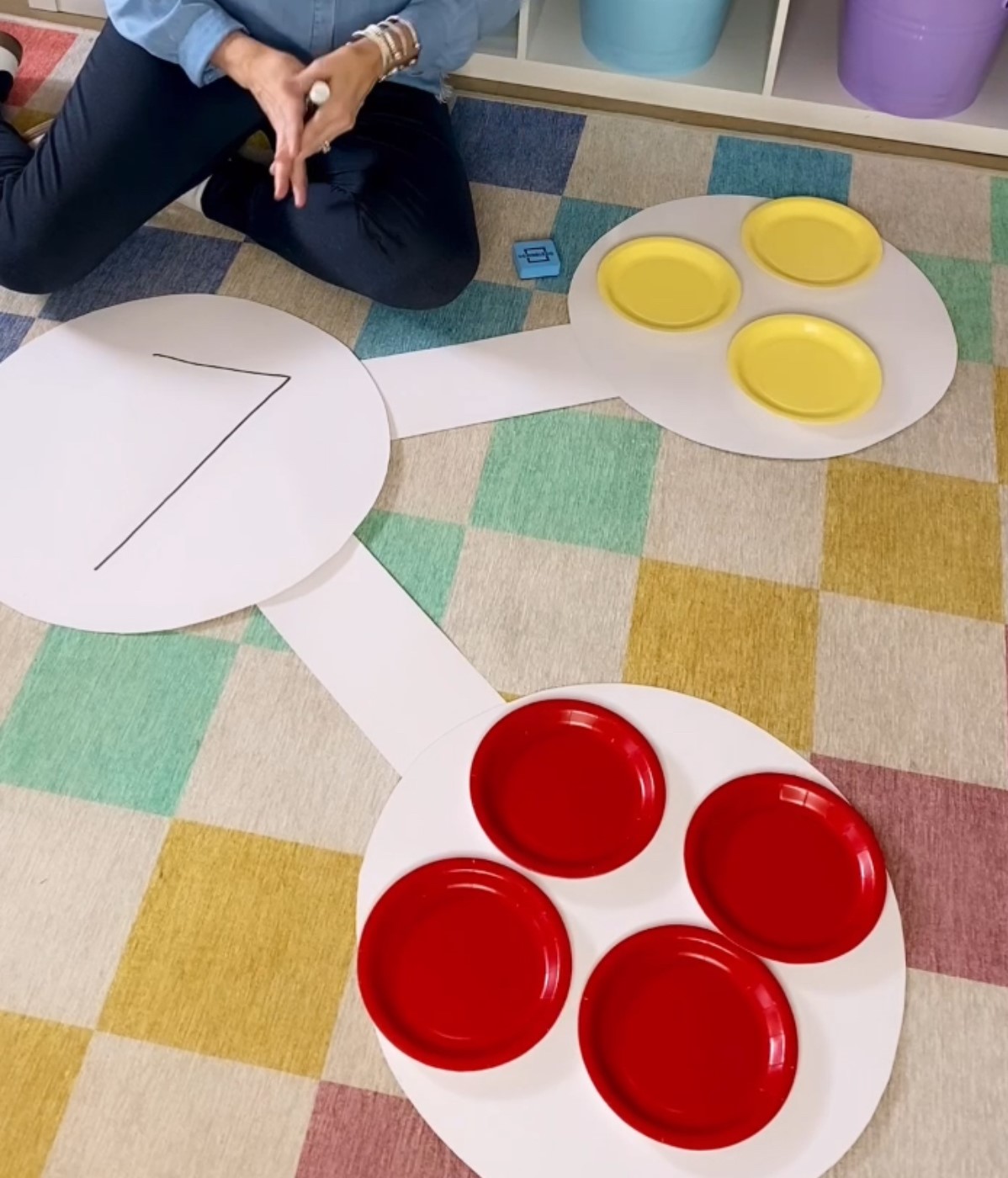
Likewise, moving pieces and parts in teaching slides can reinforce the learning. Students can connect the concrete understanding to the semi-concrete or pictorial stage of math development.
For example, in the teaching slides below, students participate in the lessons by moving the picture manipulatives to solve different addition and subtraction scenarios through different strategies. Each lesson has a series of slides with different problems for the teacher and students.
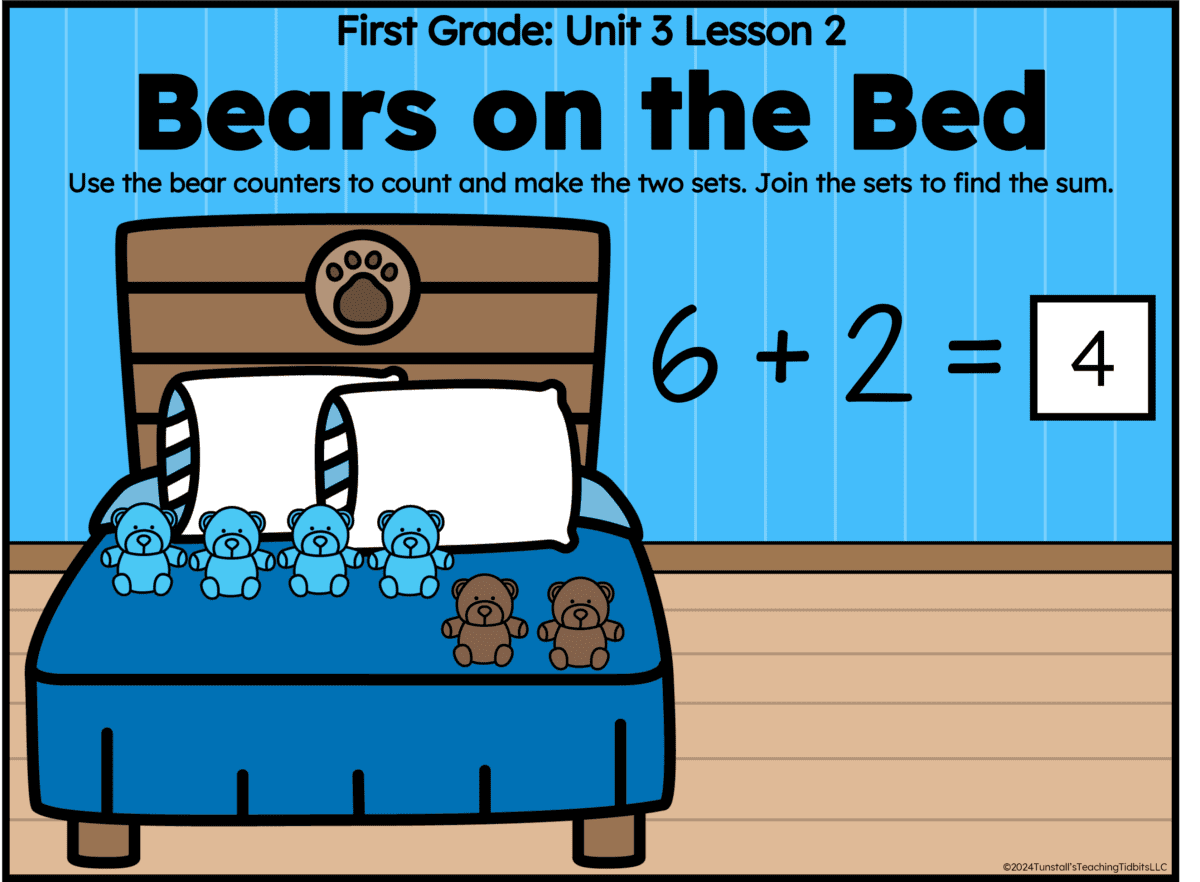
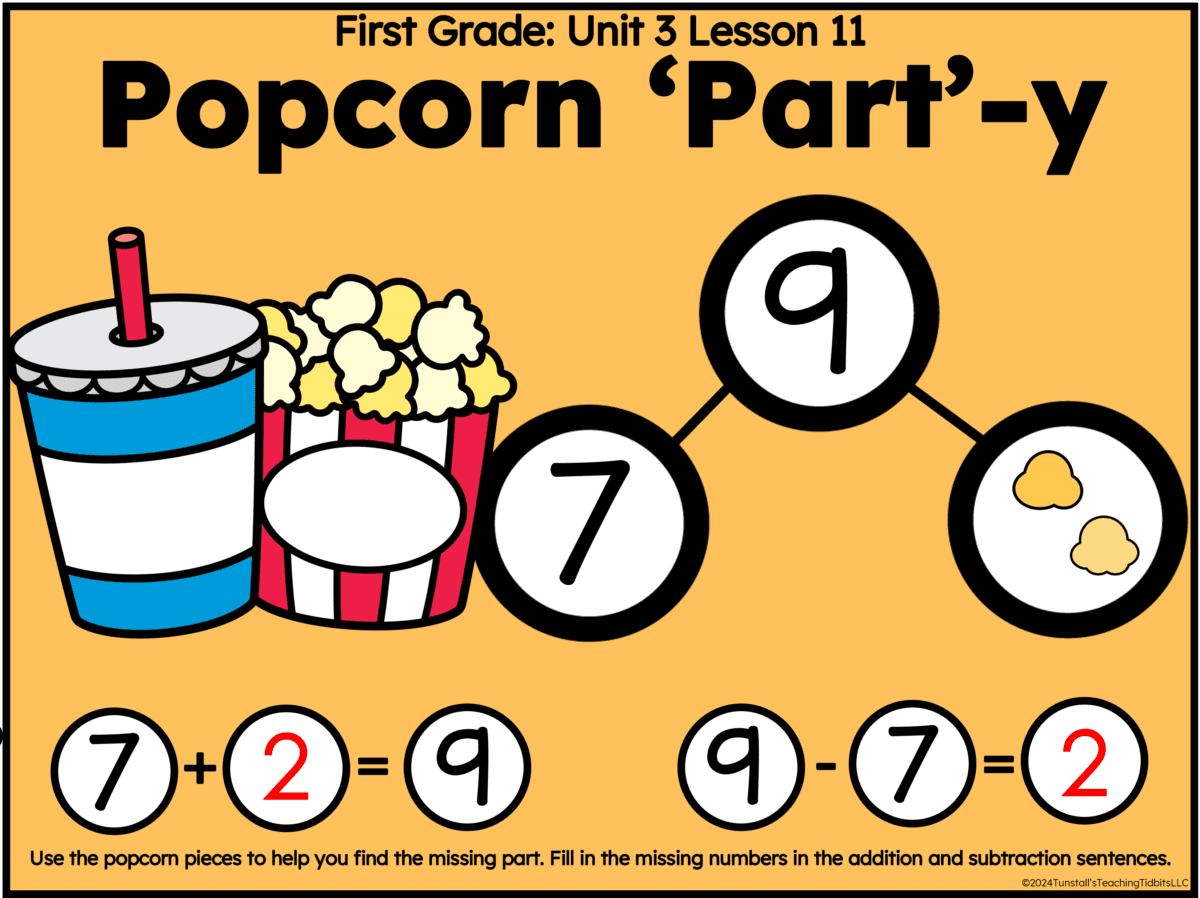
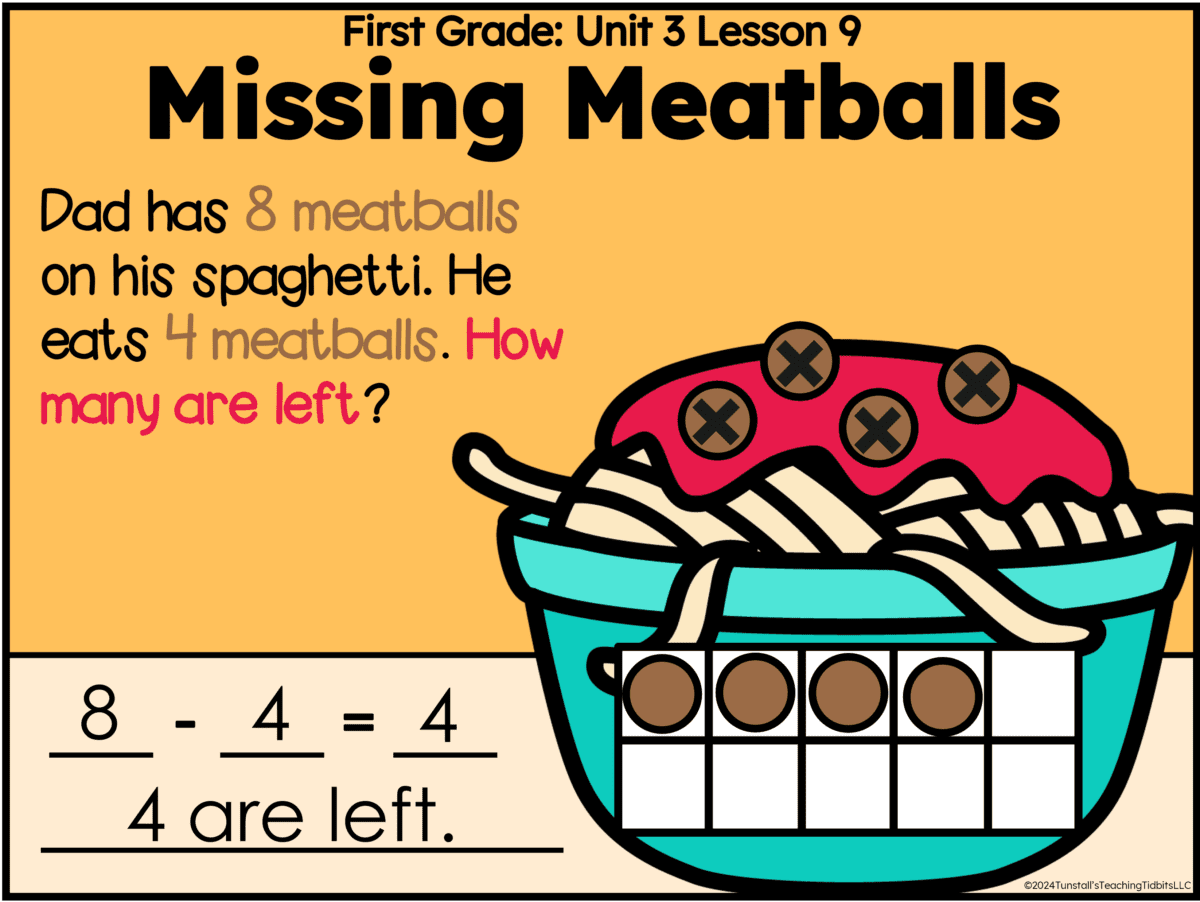
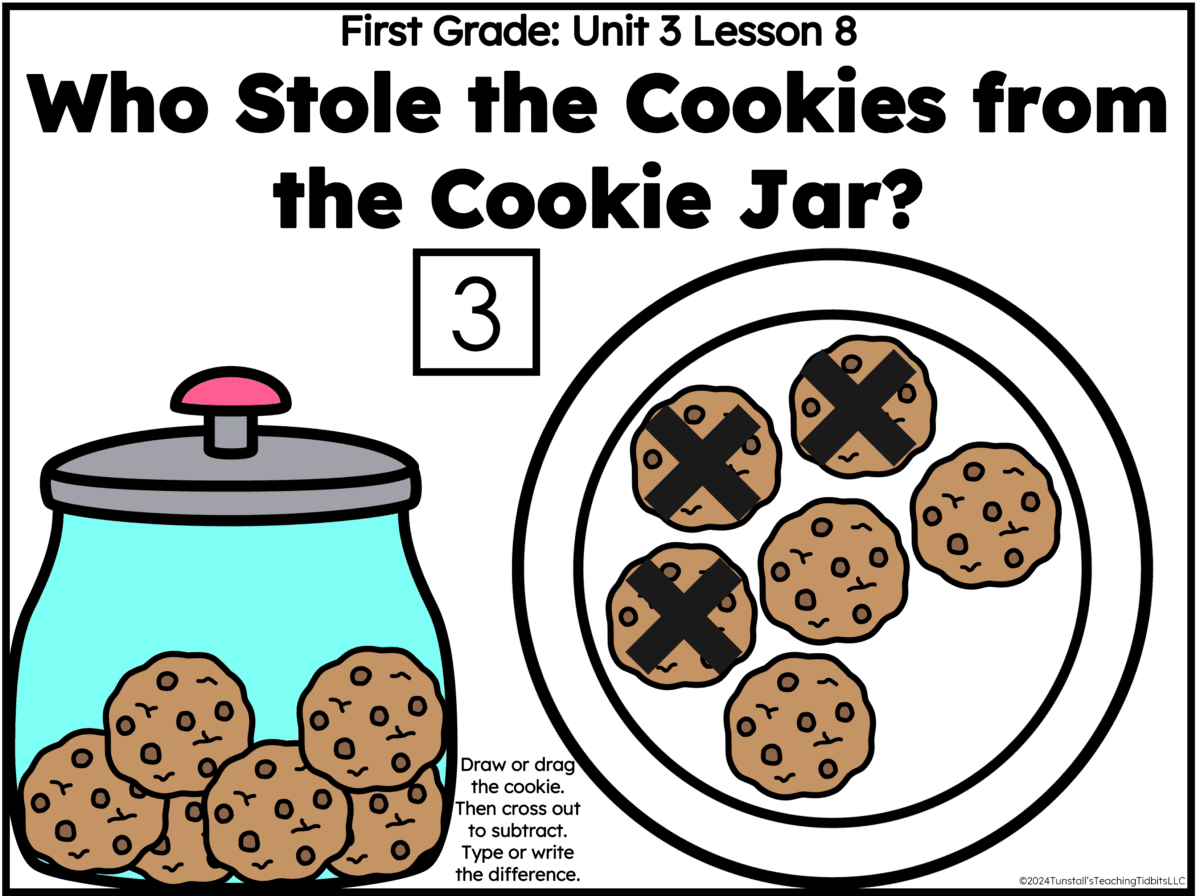
High Yield Strategy 2: Hands-On Learning
One of the most powerful tools for teaching addition and subtraction speaks to first graders at a developmental level. Effective math instruction involves hands-on learning. Using counters, cubes, and everyday items allows students to physically manipulate numbers. Further, when students can put together or take apart sets of numbers or objects they conceptually carry out addition and subtraction. This solid foundation is high-yield because students will build an understanding of the action of addition and subtraction. This strategy provides the means to flexibly compute in first grade.
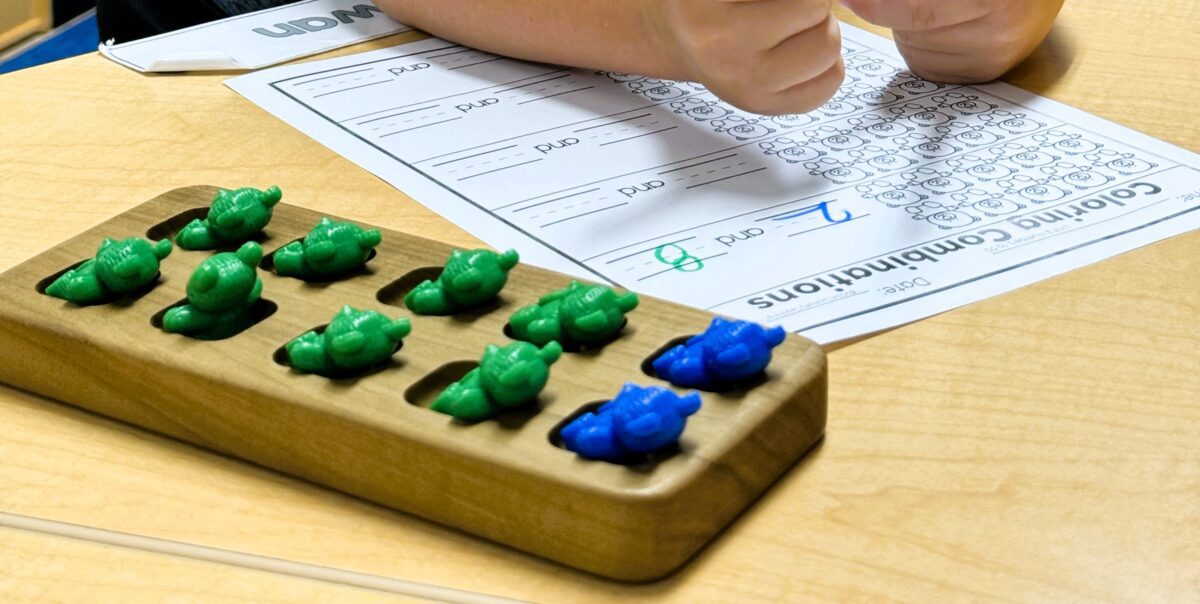
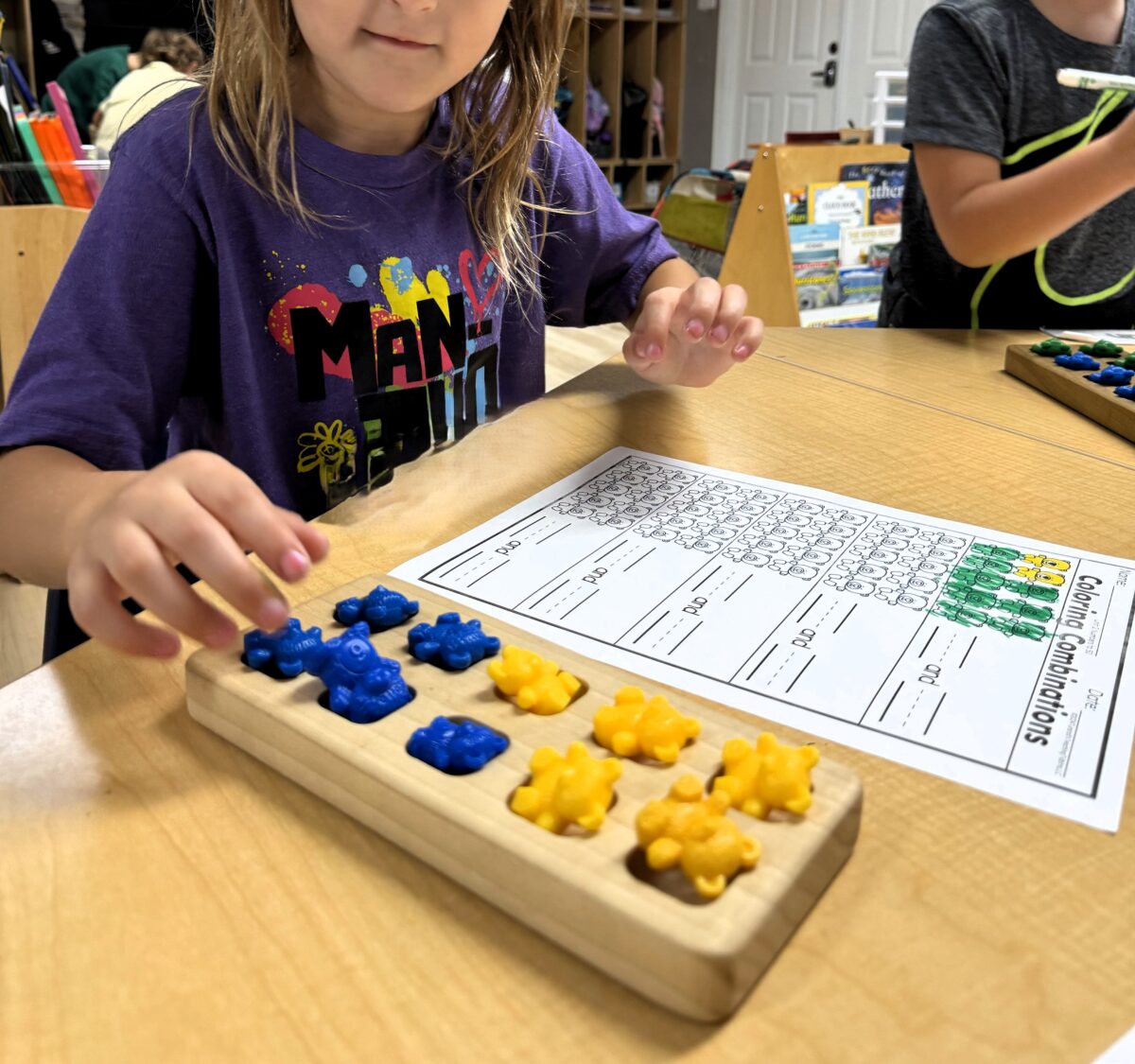
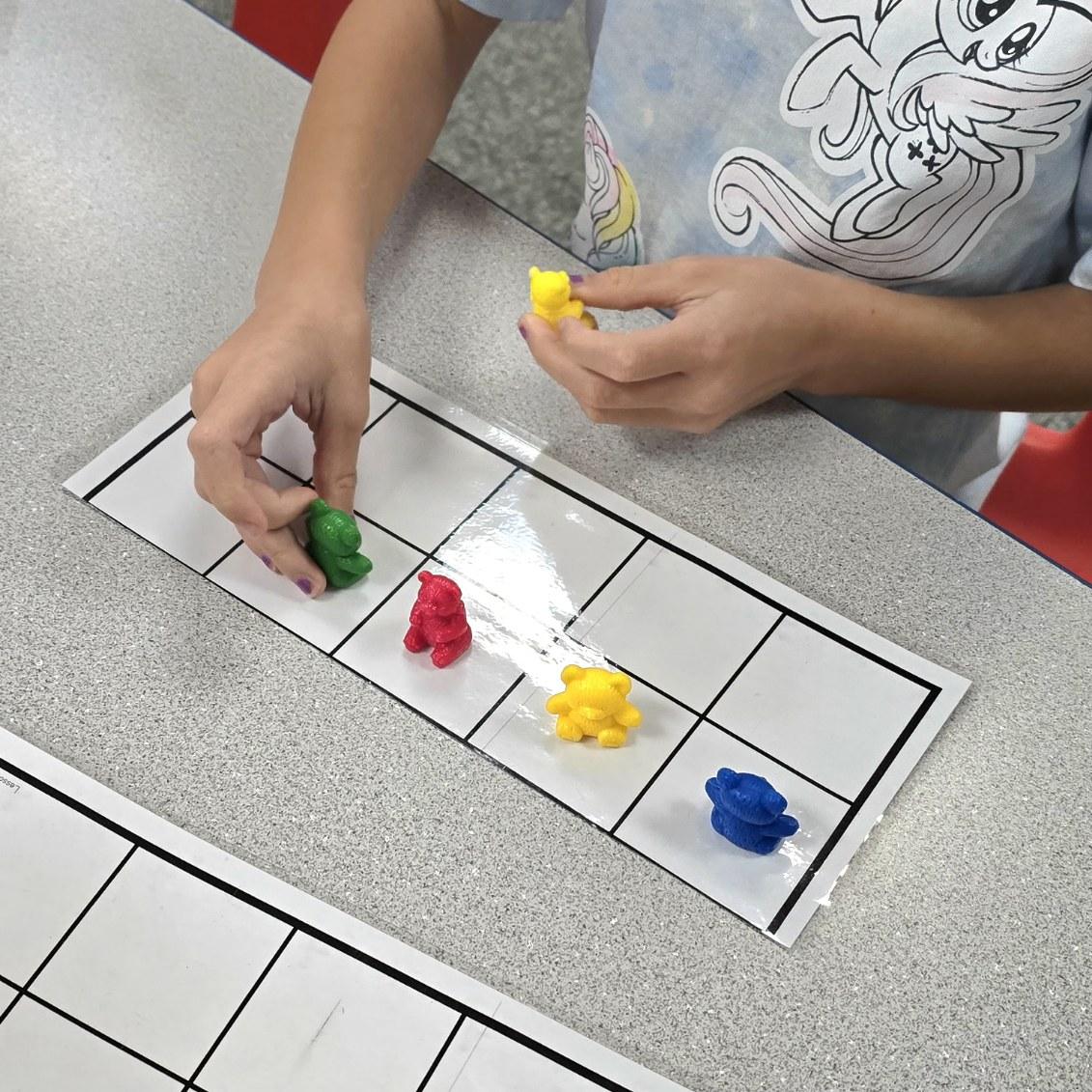
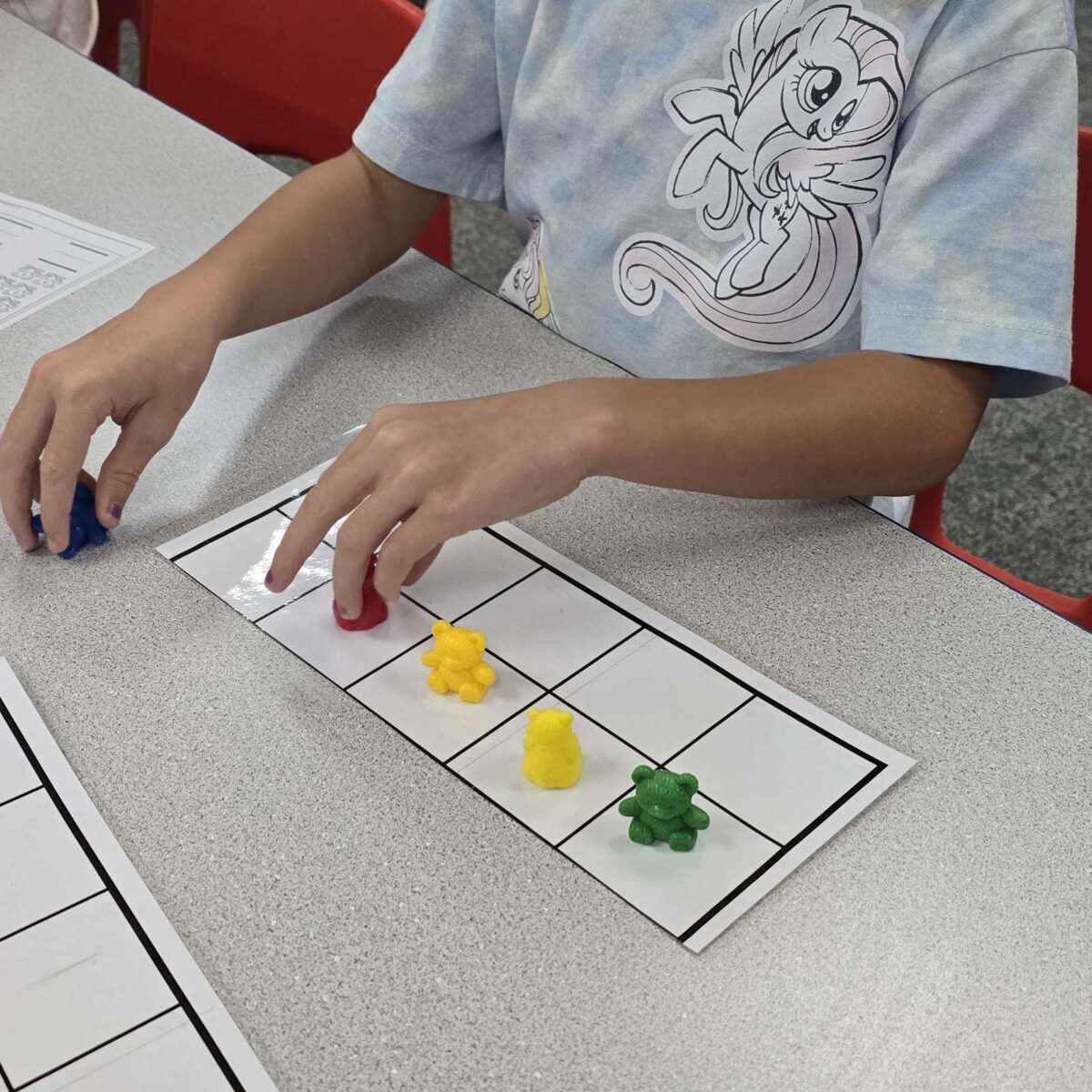
Along these lines, incorporating pictorial models, such as drawing objects or using number lines, helps students transition from concrete objects to semi-concrete understanding where picture models give visual support for the actions of addition and subtraction in first grade.
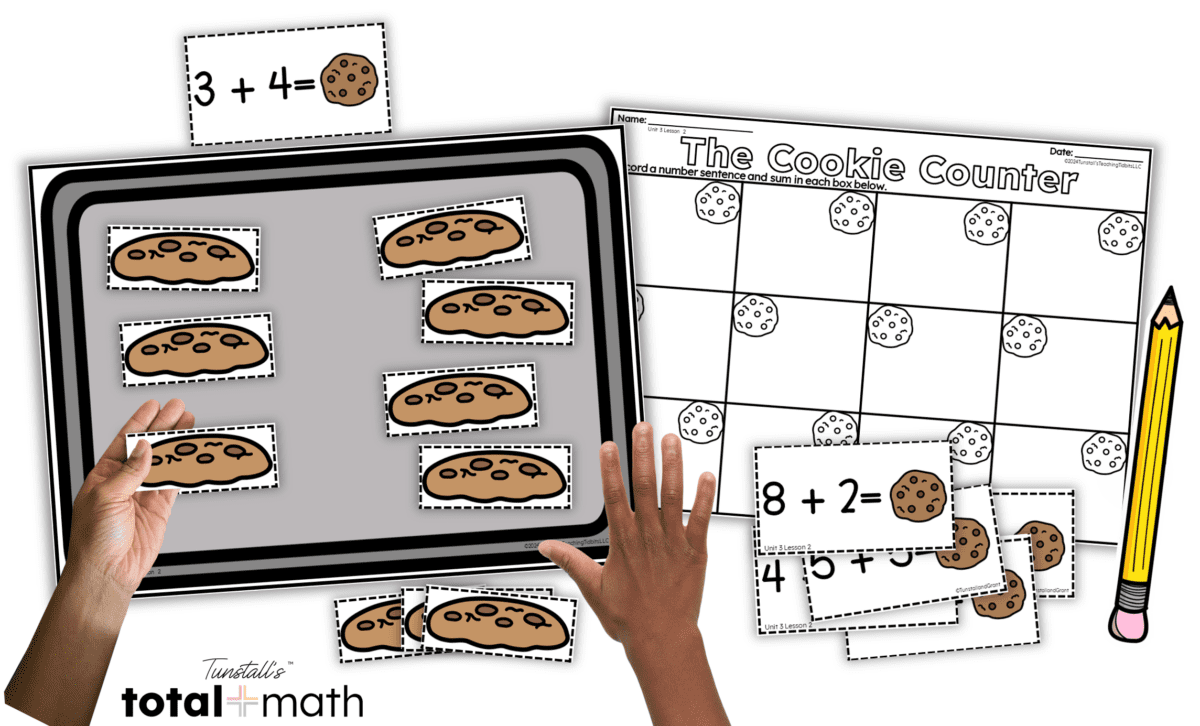
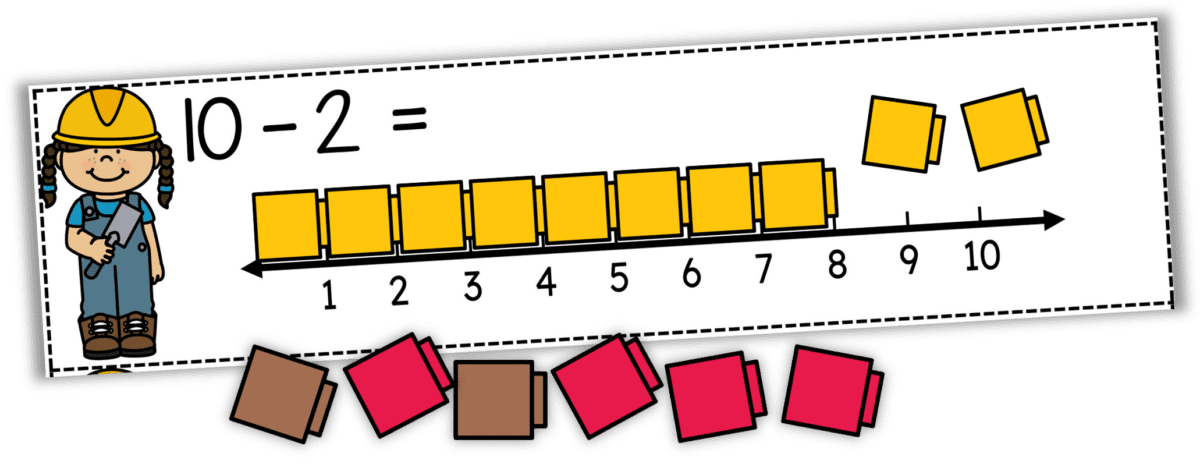
High-Yield Strategy 3: Math Vocabulary and Strategies
Teaching math vocabulary is key to building an understanding of addition and subtraction. Introducing terms and procedures like sum, difference, counting on, and counting back helps first graders articulate their problem-solving process.
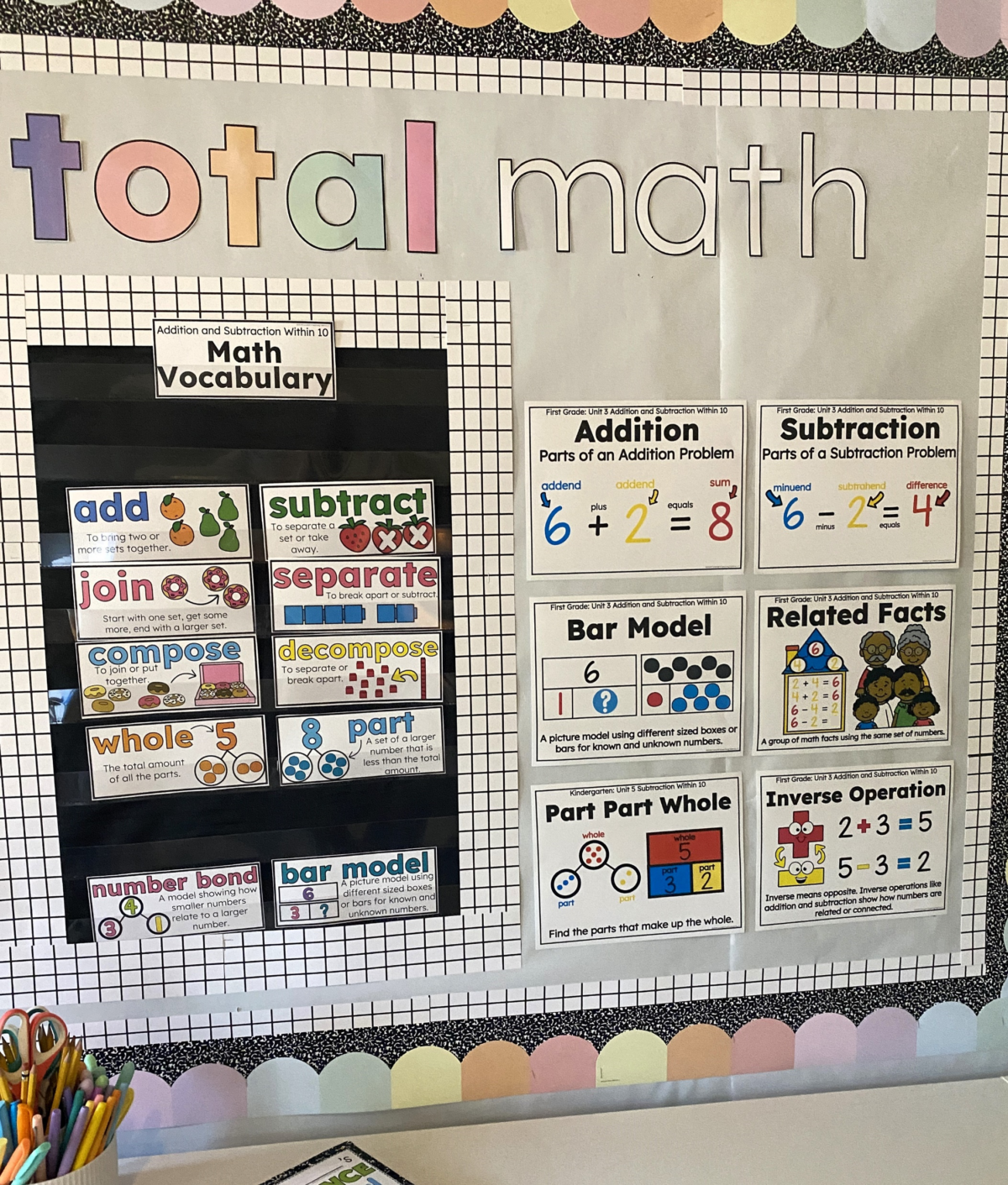
As students use strategies such as number lines, combinations of ten, and number bonds, integrating math vocabulary deepens their comprehension making it another high-yield math practice. For instance, when students learn to subtract using a number line, they should also be able to explain how they count back to find the difference.
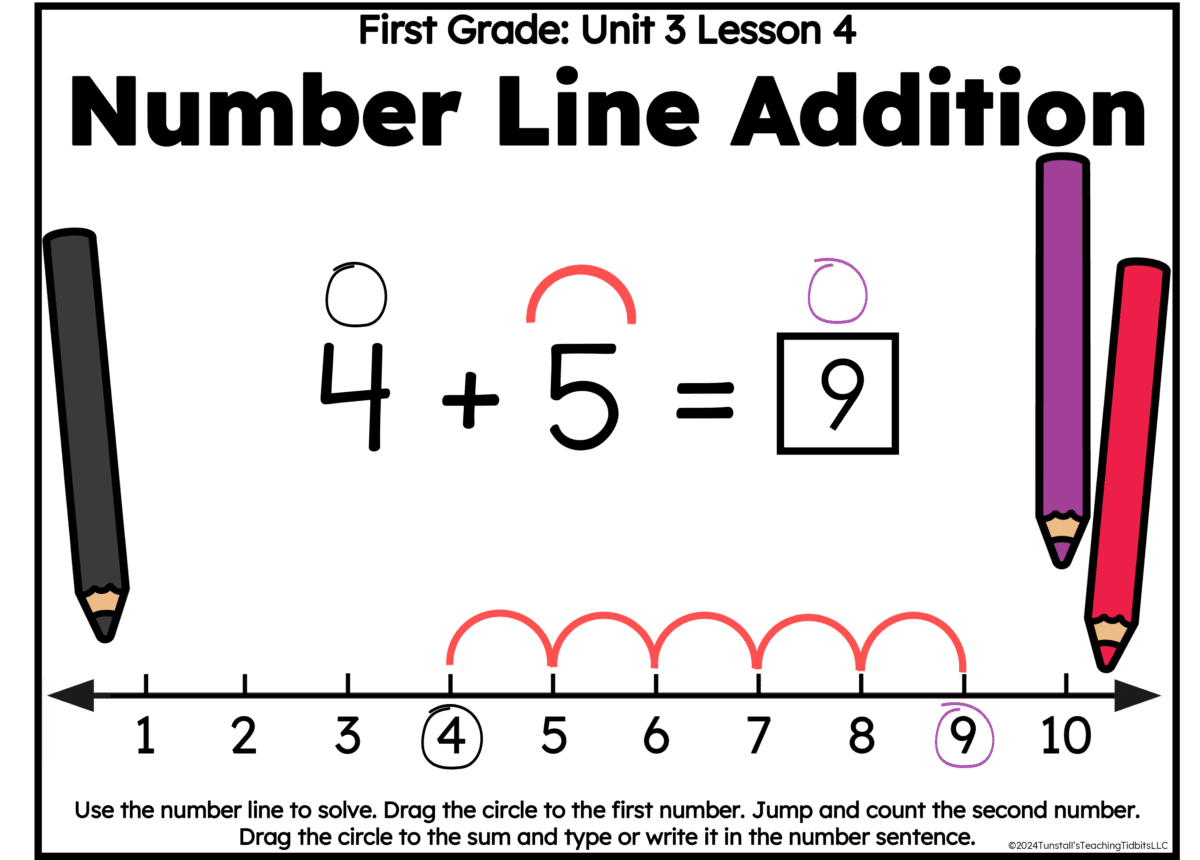
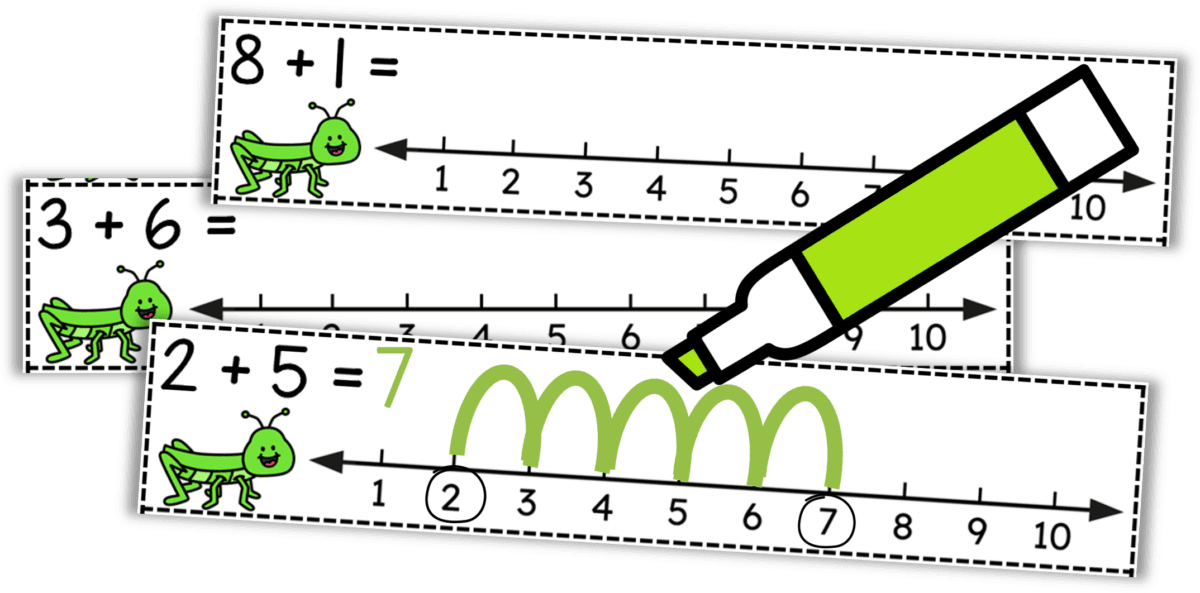
Consistently reinforcing vocabulary and math strategies for addition and subtraction builds the academic language of math, giving students the ability to communicate mathematical thinking effectively.
Bite-size interactive lessons focused on a clear learning objective yield confident mathematicians ready to apply their learning.
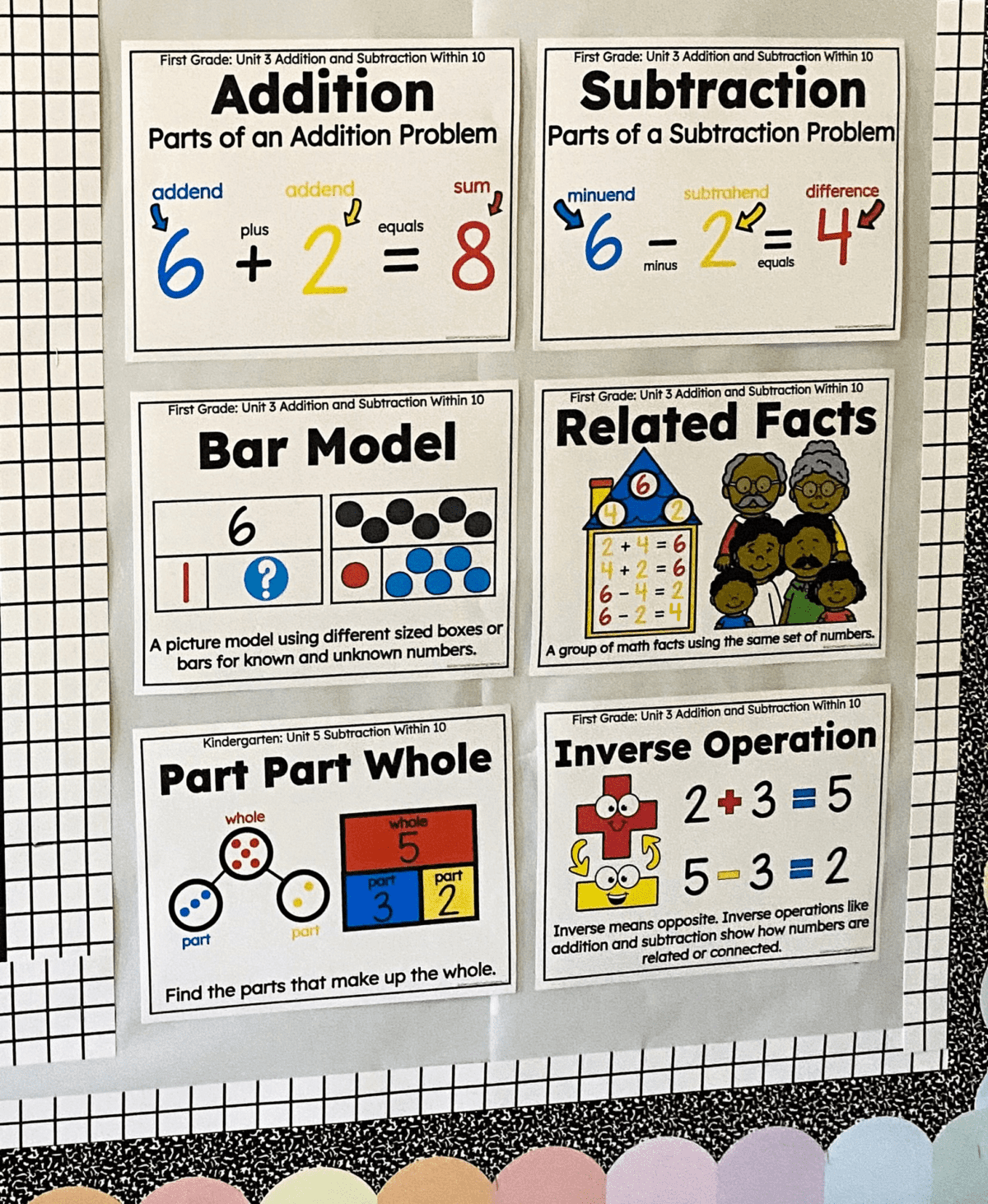
High-Yield Strategy 4: Use Technology for Engaging Practice
Math on technology offers engaging ways to reinforce math skills. Technology can make revisiting a math procedure much more enticing in a self-paced self-checking format. Gamified activities motivate students to practice essential strategies for addition and subtraction in first grade.
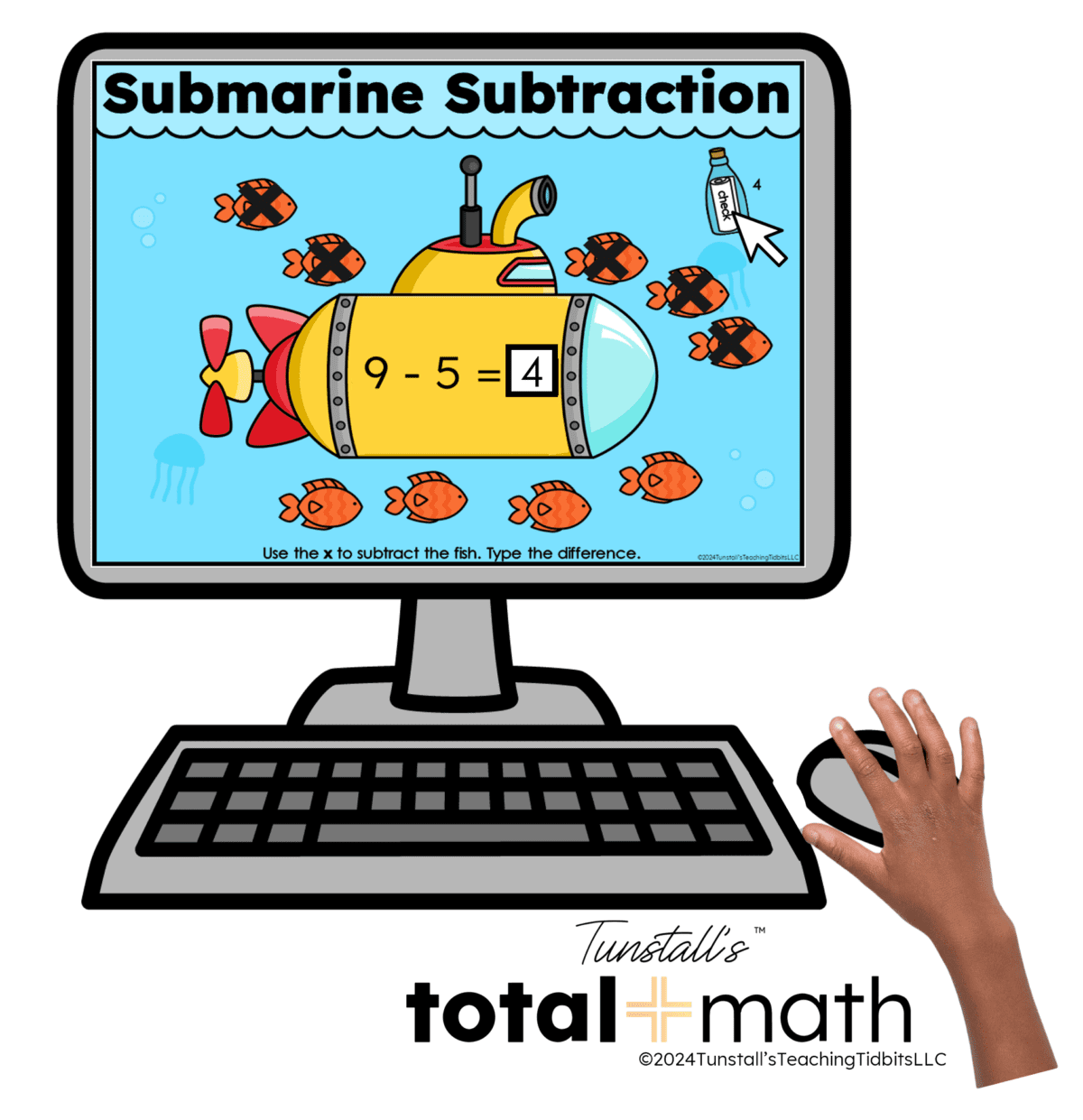
We incorporate an aligned technology game for every lesson as a student station. This is part of our well-rounded TOTAL math stations experience.
High-Yield Strategy 5: A Well-Rounded Math Experience
We’ve shared two student stations already, the hands-on math station, and the technology station. There are two more student stations below that we use to create a well-balanced menu of math activities. There is a variety of independent and cooperative tasks to provide the best of both experiences.
Learning Log
A learning log is a great way for students to show what they’ve learned and track progress over the months of the school year. Students internalize their procedures and document their thinking process. This individualized practice revisits and reinforces learning all through the school year. Further, all activities and lessons in Total Math are aligned each day. No more searching for something to reinforce the lessons.
Application of Learning
Perhaps most coveted by the teacher, is the independent practice station to align to each lesson. This station provides an easy and helpful grade for teachers while also being versatile in how it can be integrated into the day. It can be an easy station, daily homework, or used for extension and review at any time. We lovingly call it application station with the students.
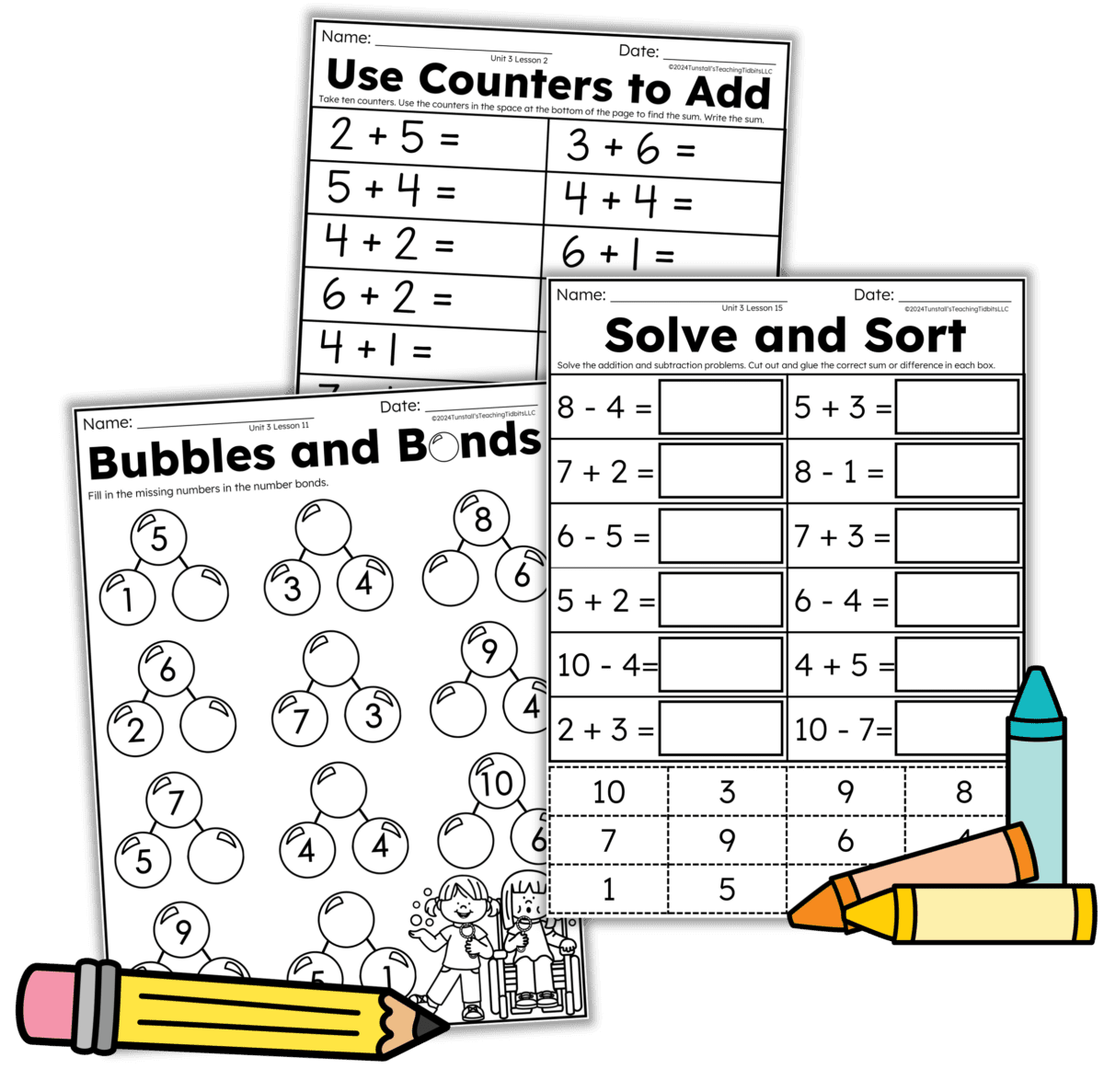
High-Yield Strategy 6: Math Warm-Ups and Reflections
Opening and closing a math lesson with a math prompt or reflection slide is a key teaching practice that allows students to consolidate their understanding and listen to their peers do the same. Reflecting encourages students to explain their problem-solving process, reinforcing key math vocabulary and concepts. This practice can also identify areas where students may need more support. By taking time to reflect, students develop metacognitive skills.
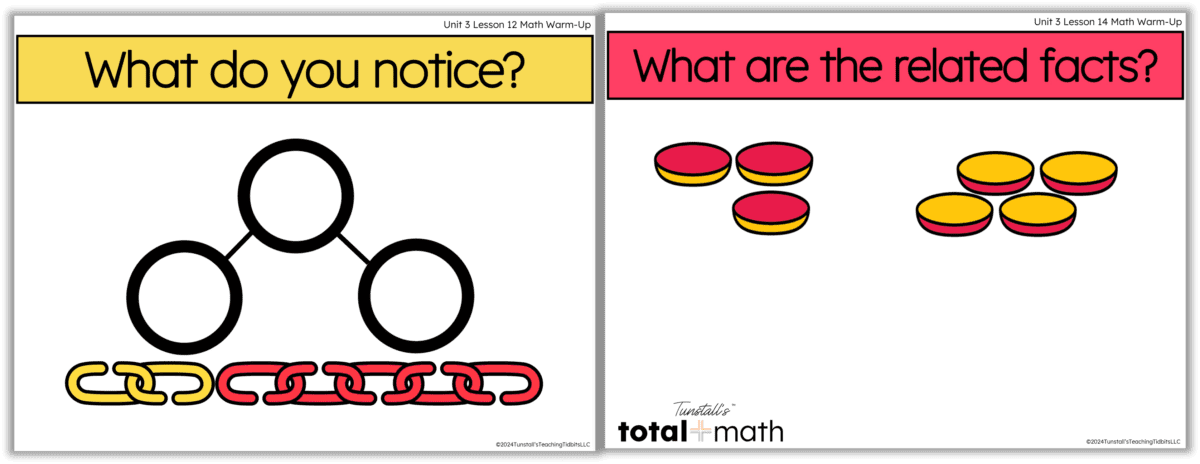
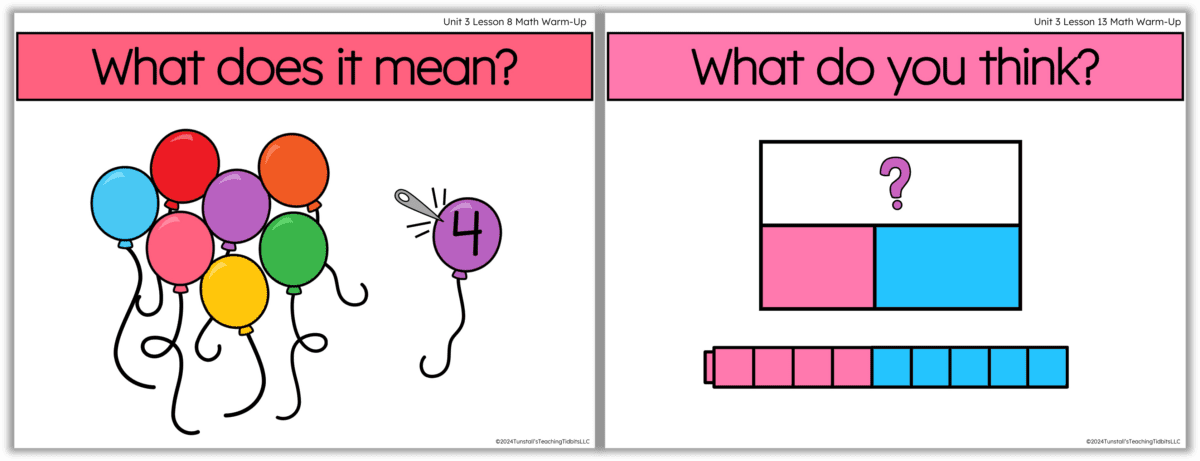
Students gather and share their thinking on just one math warm-up slide per day to kick off the math block. Likewise, the lesson closure can be the same procedure in a reflection of learning.
Watch a lesson of Total Math First Grade Unit 3
I’ll take you through a lesson from this unit in this video so you can see the flow of the lesson plan and the components.
Purchase Orders and Invoices for Total Math Curriculum
We can help your school or district purchase Total Math directly with a purchase order or invoice for payment as a vendor. For help with this, email [email protected]. To check if we are already an approved vendor, search our vendor name, Tunstall’s Teaching Tidbits, LLC. Please note that purchase orders must meet the minimum licensing requirement.
We hope this post has provided high-yield strategies for addition and subtraction in first grade that you can immediately incorporate into your math block! For more first grade math learning be sure to click any of the links below.
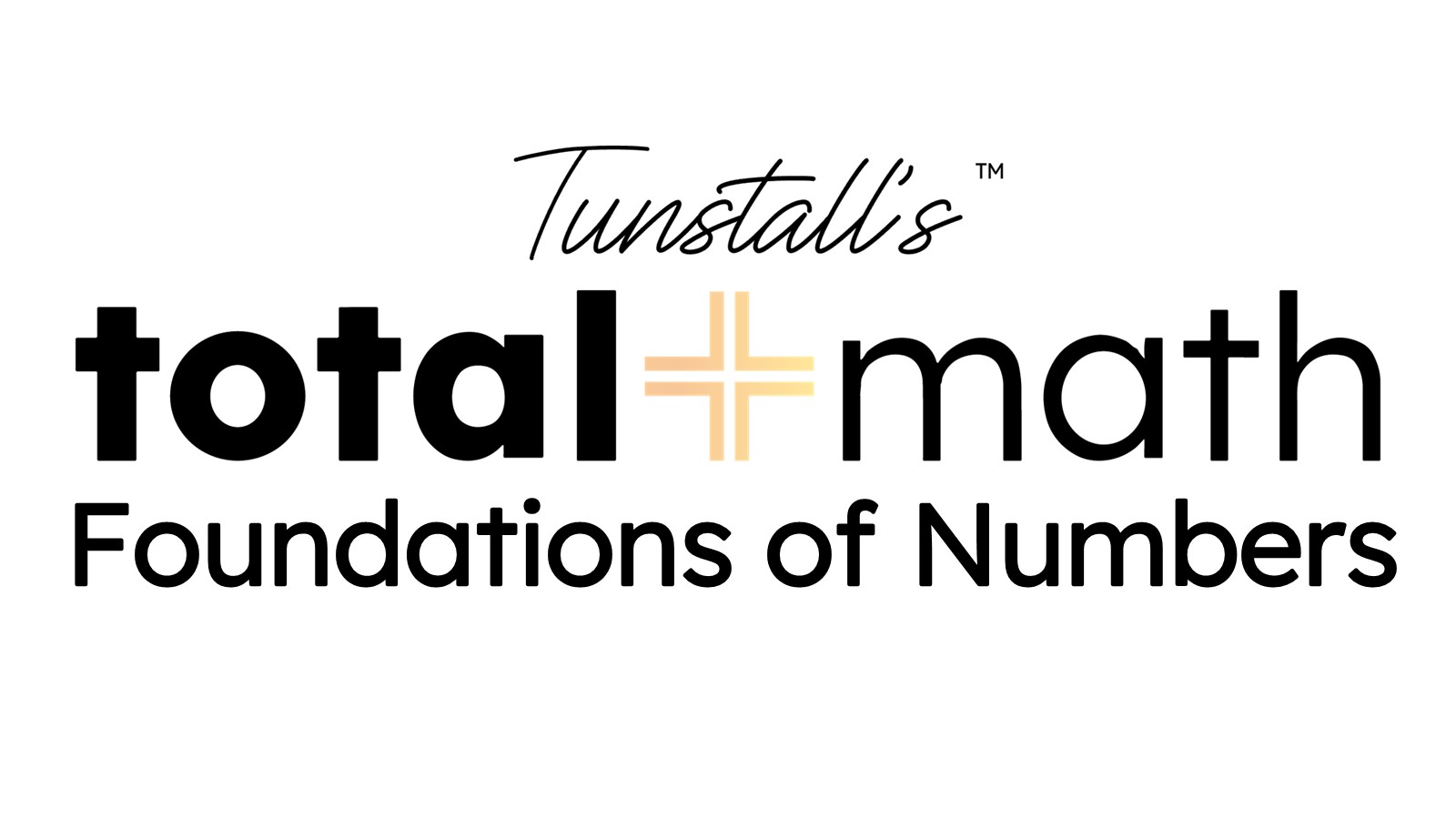

 Contact Us
Contact Us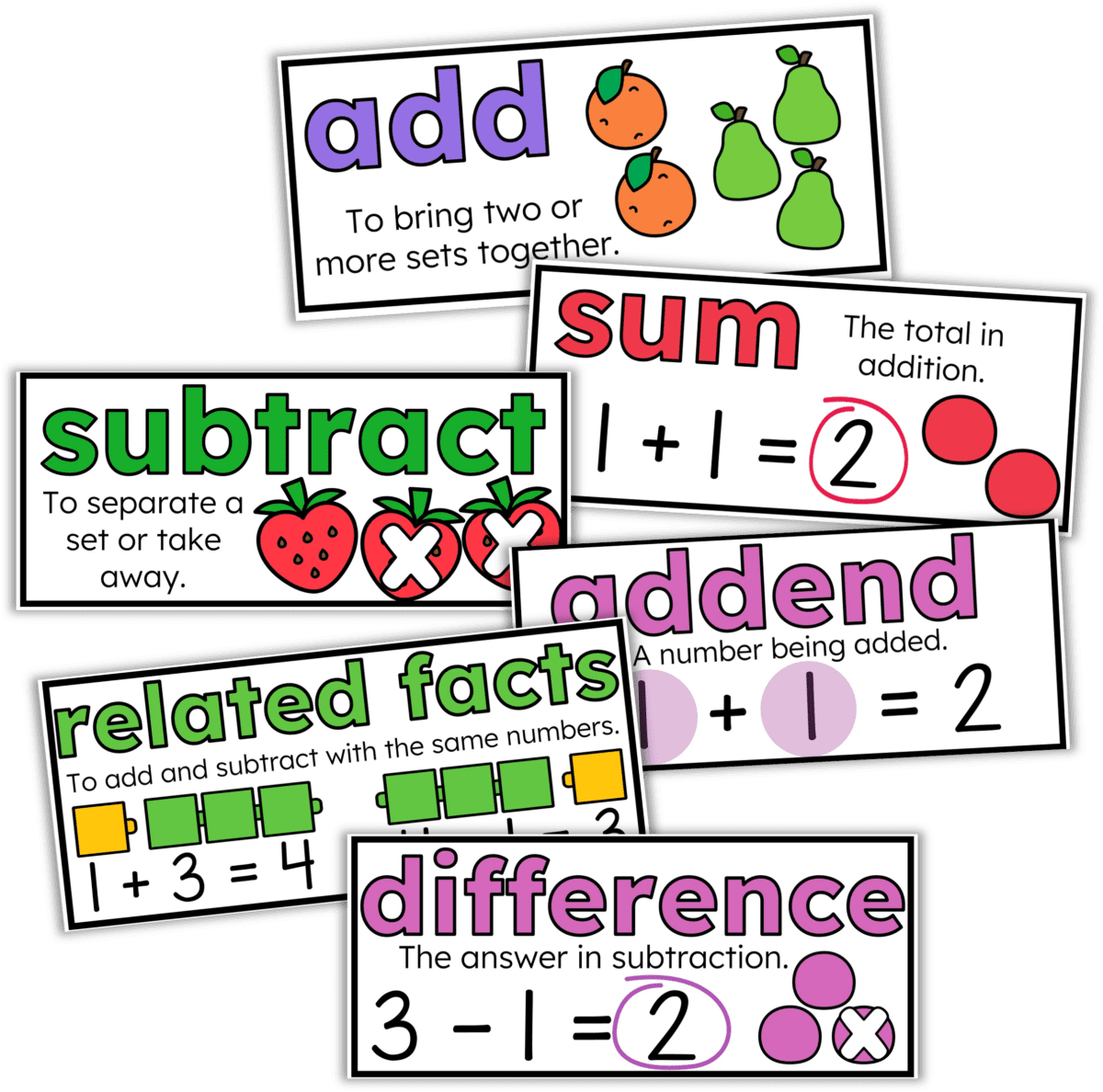
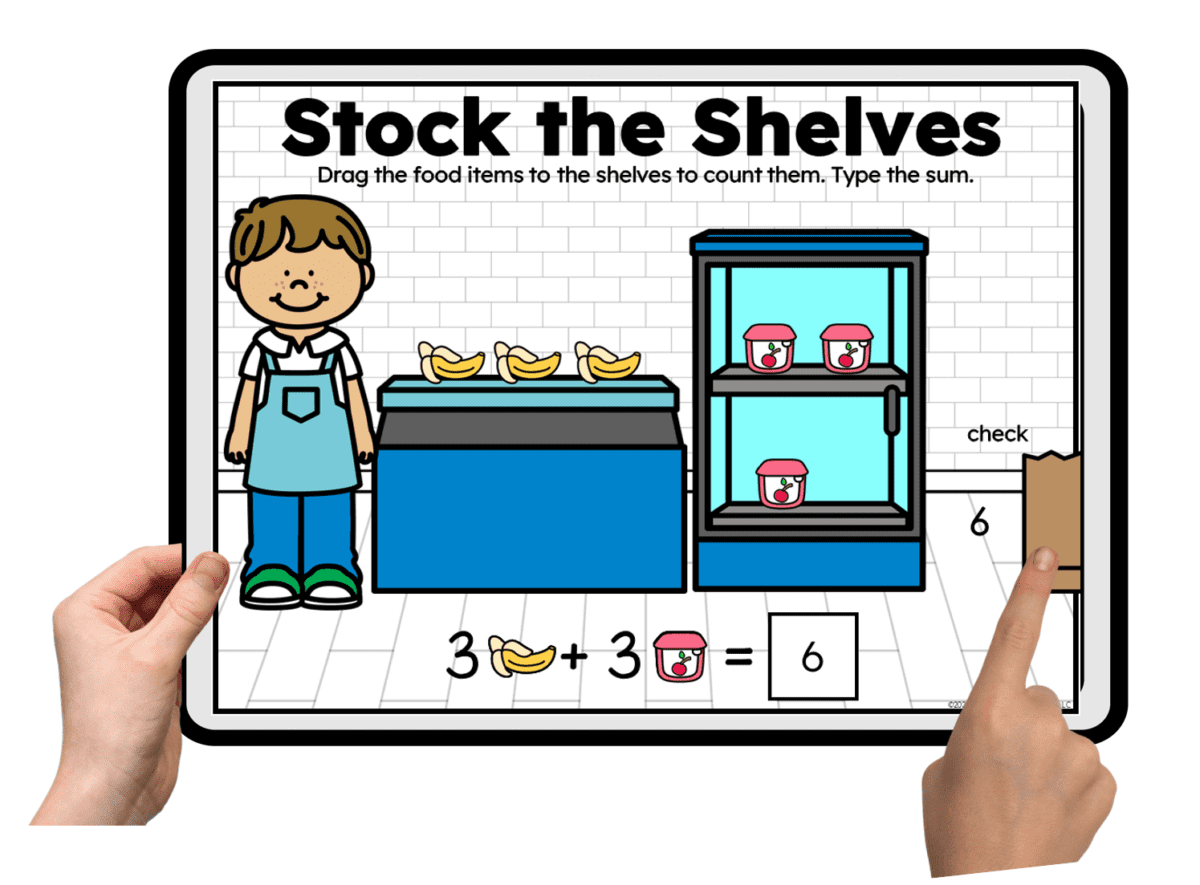
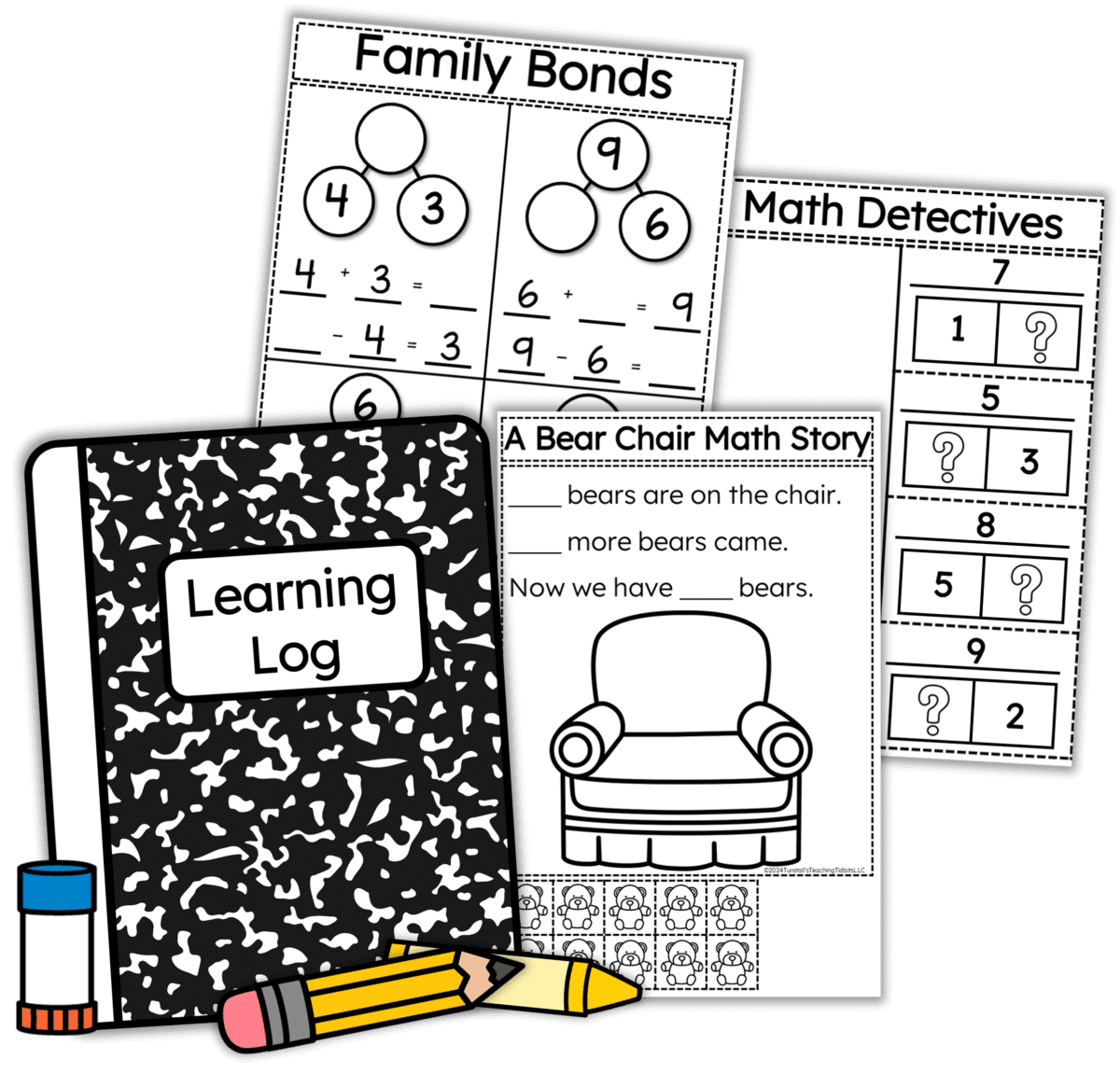
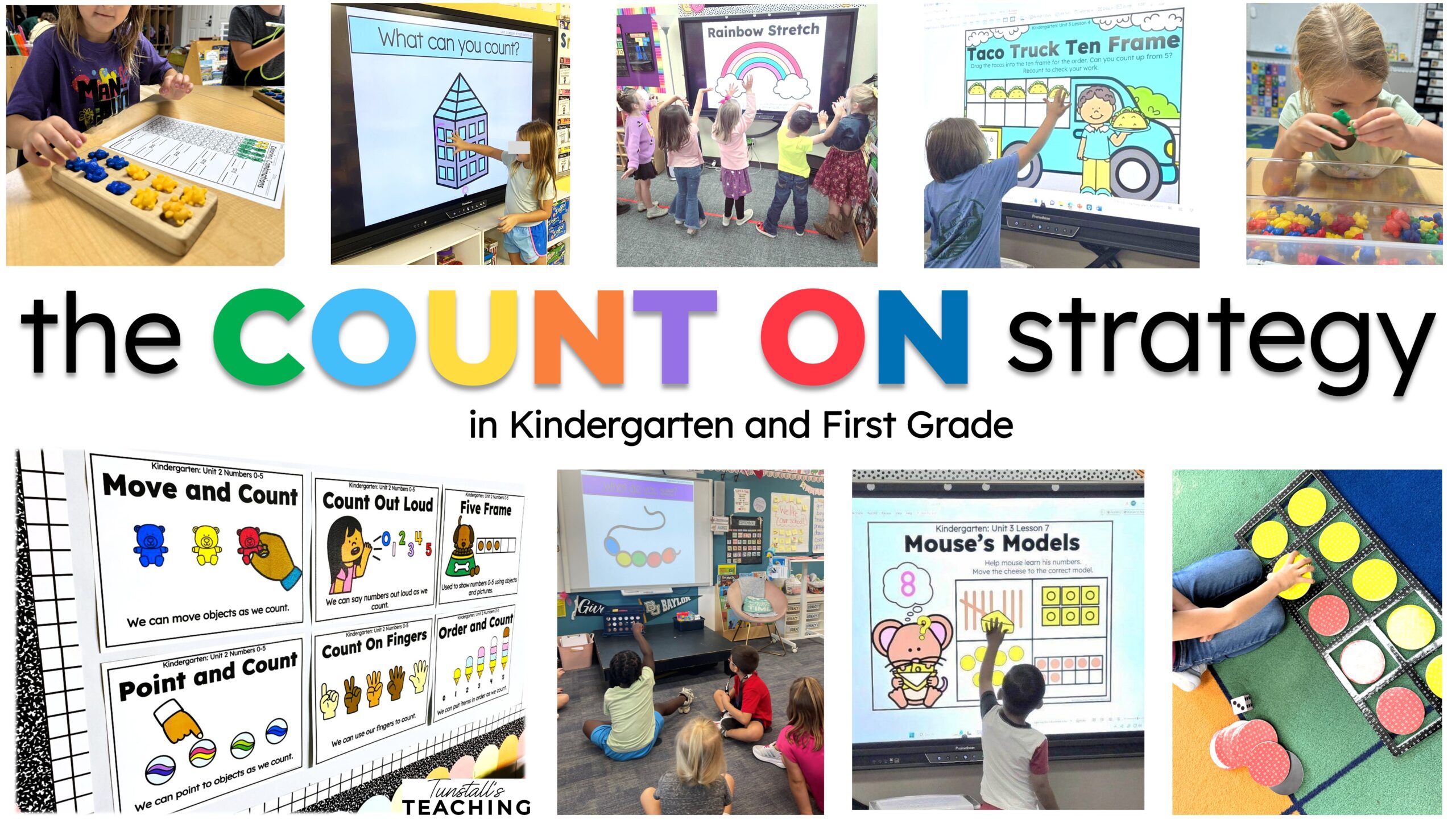

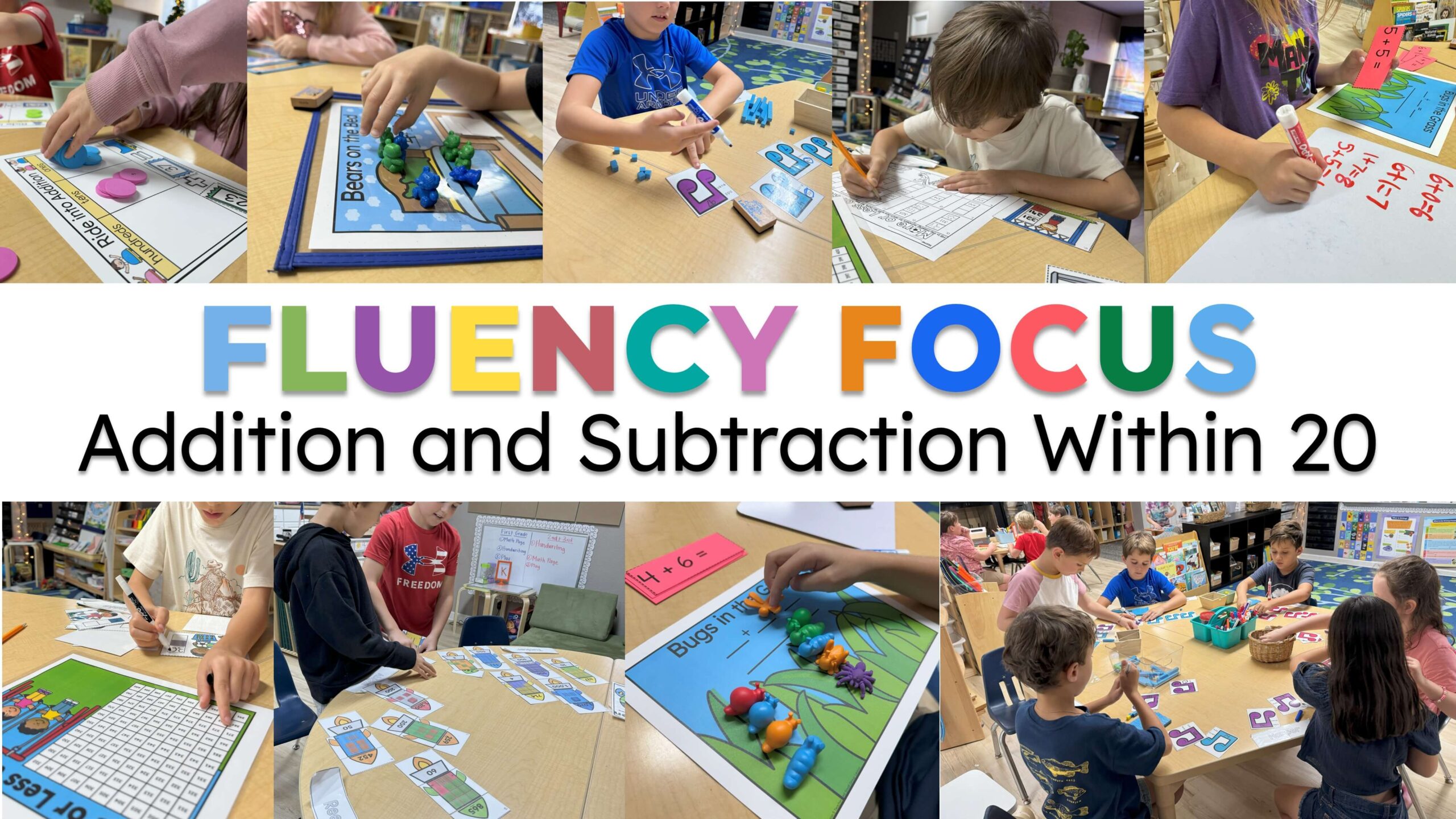
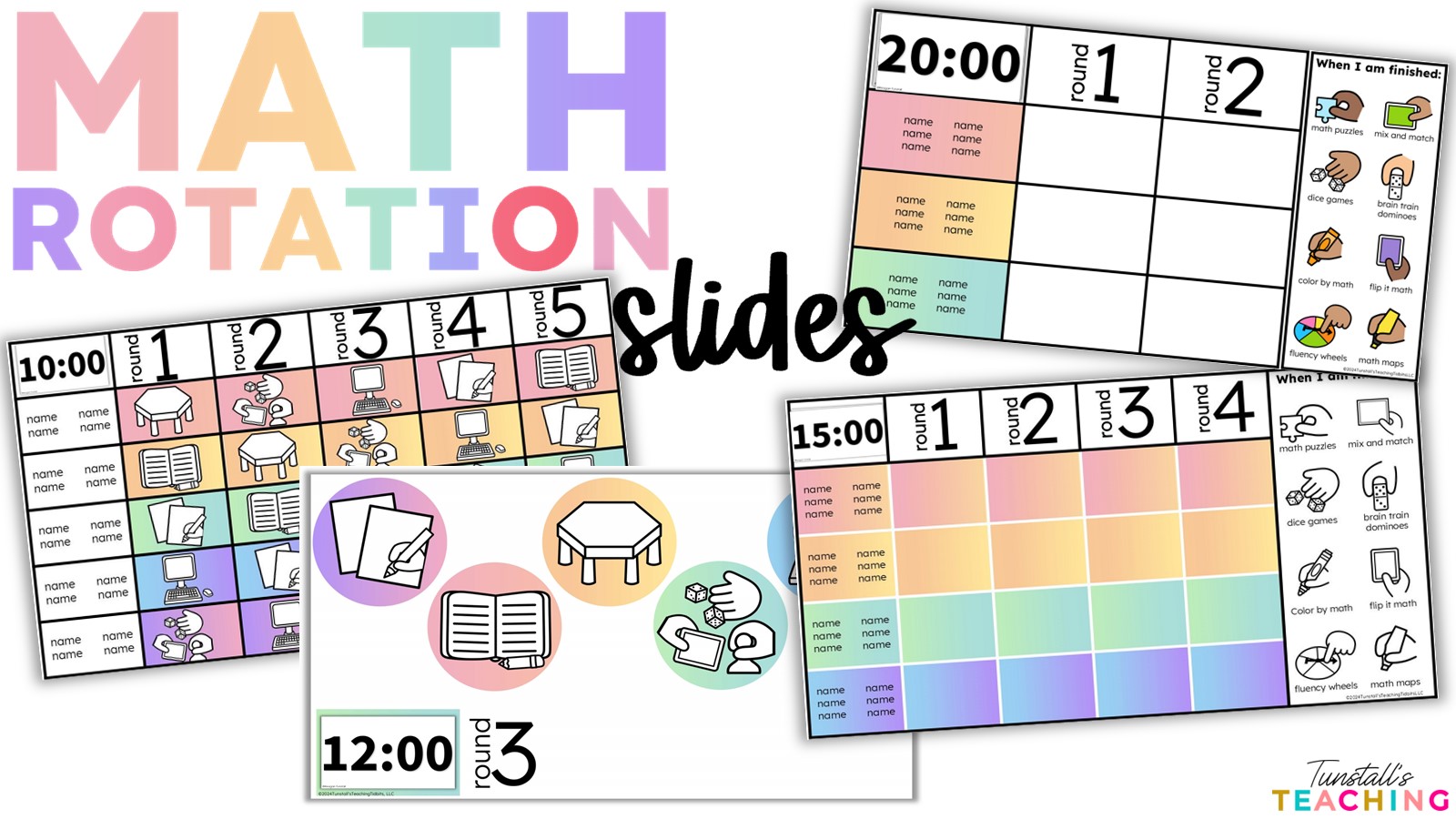

Thank you for all of this information and visuals! This is so helpful!
Please tell use about the black pocket chart and white paper used on the bulletin board.
Is the paper regular bulletin board paper or something more substantial?
Thanks so much!